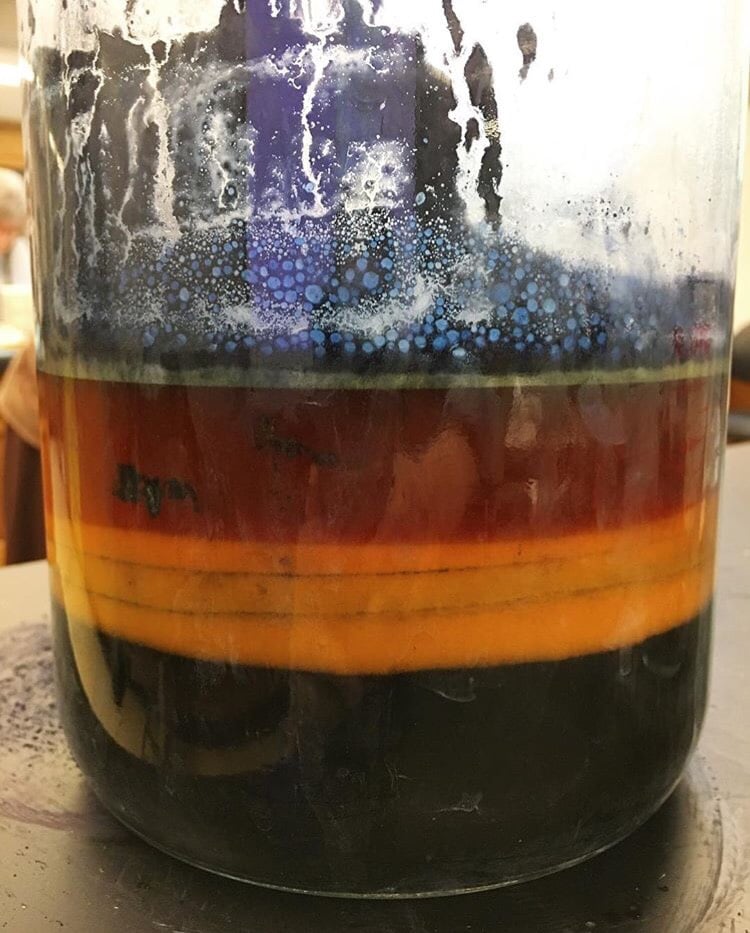This week: Dye ratios to water, re-mordanting something already mordanted and blue yogurt??
Every week, we are emailed with questions from our natural dye community asking simple and complex questions that we thought might be worth sharing. Of course, all of your burning questions are answered by natural dyer in chief, Kathy Hattori, Founder of Botanical Colors.
I dyed silk in heated cutch, then after I removed article, I turned off the heat and put in a second piece of silk. I liked the color after 1/2 hour of soaking and removed. Will this still be washfast? Must I leave items in for certain lengths of time to work best?
It’s always best practice to dye a piece with enough time so that the dye is thoroughly bonded with the textile and we usually advise 45 minutes, so it sounds like 20 minutes might not be enough time. It’s possible that washfastness will not be an issue, but you can easily test it by washing the fabric and observing if the rinse bath is bleeding color. If it seems relatively stable, then it should be fine.
It may be a very basic question for dyers but I held it for a long time with unsettling feeling in me but now I am dying to know! I have been using WOF when determining how much dyestuff I need to use just because I have learnt it this way. Here, the amount of water to dilute the dyestuff is not specified much. It means the concentration of the dye liquid varies depending on how much water you will add to dyestuff. Can you explain why WOF is more often used in the world of dye compared to dilution/concentration? Is dilution/concentration method less accurate in terms of achieving certain intensity of colors?
Dilution or concentration or grams per liter (gpl), is most commonly used in the industrial textile world and weight of fiber is often used with hand dyers. Technically, you are correct. If you put a very small piece of fabric into an enormous dye pot with a small percentage of dye, the sheer amount of water will “dilute” the color and it will dye lighter than in a smaller dye pot with less water. Since many dyers use an approximate ratio of fabric to water and that ratio is 1:20, this is not a common occurrence. If you want to be consistent with your recipes, always calculate the amount of water to textile weight so you get a feel for the water ratios you use, and then repeat those.
If I’ve already mordanted and dyed a shirt and want to dye it more with same color, do I have to re-mordant the shirt?
I do not re-mordant when I re-dye, but it is possible to re-mordant if it has been a number of years since the items was dyed.
I just made two 1-2-3 stock jars starting with 30grams of your beautiful indigo. I also used pickling lime rather than a jar labeled calcium hydroxide. My first jar acted perfectly my second jar looks and feels like blue yogurt. I did everything the same with both jars using the same ingredients from the same packages for both. It seems like the lime went crazy. Have you ever heard of this? Can you help me with a solution to this mystery?
If the ratio of indigo, calcium and fructose or henna is too large a volume for the quart jar, the mixture can get very thick, sometimes even quite lumpy. The mix looks like indigo mud, or yogurt, sometimes thicker. If this happens, simply add more warm water and mix with the thickened mixture until it thins out, and then the chemical reaction will proceed.
You might be interested in reading:

